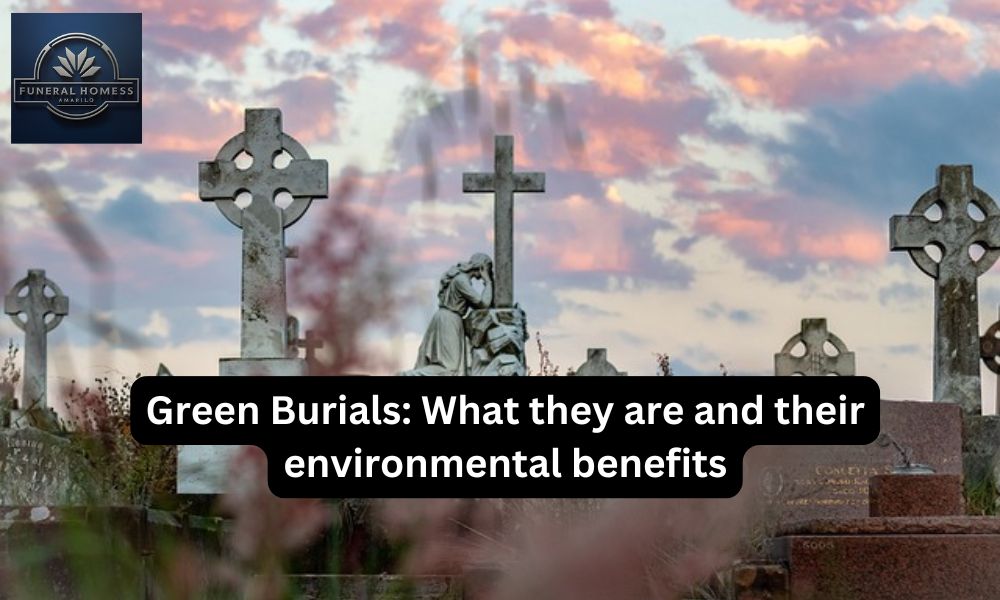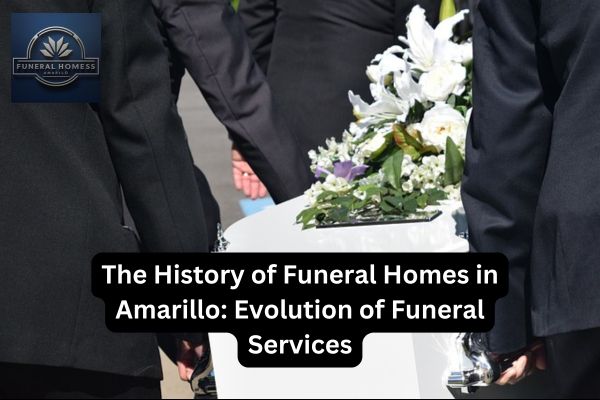Green Burials: What they are and their environmental benefits
Green burials, also known as natural burials, have gained popularity as more people become conscious of their environmental impact. This eco-friendly approach to interment seeks Green burials, also known as natural burials, which have gained popularity as more people become conscious of their environmental impact. This eco-friendly approach to interment seeks to minimize the ecological footprint left behind, ensuring that the burial process aligns with the natural cycle of life and death. In Amarillo, Texas, where the beauty of nature is appreciated, this burial option offers a way to honour loved ones while protecting the environment.
What is a Green Burial?
The Concept
A green burial is an environmentally sustainable method of interment that emphasizes simplicity and a return to nature. Unlike traditional burials, which often involve embalming chemicals, metal caskets, and concrete vaults, this type of burial focuses on reducing environmental harm. The body is typically buried in a biodegradable casket or shroud, allowing for natural decomposition. This process ensures that the body returns to the earth, contributing to the surrounding ecosystem.
Key Features
These burials are characterized by several key features that distinguish them from conventional practices:
- No Embalming: Traditional embalming involves the use of chemicals like formaldehyde, which can leach into the soil and water. In green burials, the body is not embalmed, allowing it to decompose naturally without introducing harmful substances into the environment.
- Biodegradable Materials: This method requires the use of biodegradable caskets, urns, or shrouds made from natural materials such as bamboo, wicker, or untreated wood. These materials break down over time, reducing waste and environmental impact.
- No Concrete Vaults: Conventional burials often involve the use of concrete vaults or liners to prevent the ground from sinking. This approach eliminates this practice, allowing the body to be in direct contact with the earth, which promotes natural decomposition.
- Natural Burial Sites: These burials often take place in natural burial grounds or conservation cemeteries. These sites are designed to preserve the natural landscape, with minimal landscaping and maintenance. They may also serve as wildlife habitats, contributing to local biodiversity.
Environmental Benefits
This approach to burial offers numerous environmental benefits, making it an attractive option for those seeking to reduce their ecological footprint. These benefits extend beyond the burial process itself and contribute to the broader goals of sustainability and environmental conservation.
Reducing Carbon Footprint
Traditional burial practices contribute to greenhouse gas emissions through the production and transportation of caskets, vaults, and embalming fluids. Additionally, the maintenance of cemeteries, including lawn mowing and the use of pesticides, adds to the carbon footprint. This eco-friendly alternative eliminates the need for these materials and activities, significantly reducing the overall carbon emissions associated with the burial process.
Preserving Natural Resources
The production of metal caskets and concrete vaults requires the extraction and processing of raw materials, which depletes natural resources and contributes to environmental degradation. By using biodegradable materials, the demand for these resources is reduced. Furthermore, the avoidance of embalming chemicals prevents the contamination of soil and water, protecting vital natural resources.
Promoting Soil Health
This burial method enhances soil health by returning organic matter to the earth. As the body decomposes, it releases nutrients that enrich the soil, promoting the growth of plants and trees. This process helps to create a healthy, thriving ecosystem that supports a diverse range of flora and fauna. In conservation cemeteries, where these burials are often conducted, the preservation of natural habitats further contributes to soil health and biodiversity.
Supporting Biodiversity
Conservation cemeteries, where this burial practice is typically conducted, are designed to protect and restore natural habitats. These cemeteries often serve as sanctuaries for native plants and wildlife, providing a space where biodiversity can flourish. The absence of pesticides, herbicides, and other chemicals in this practice ensures that these habitats remain unpolluted, supporting the health and diversity of local ecosystems.
Reducing Waste
The use of biodegradable materials in this burial method minimizes waste generation. Traditional burials often involve non-biodegradable caskets, synthetic liners, and other materials that can persist in the environment for centuries. By contrast, this approach uses materials that naturally break down over time, leaving behind no long-lasting waste. This reduction in waste contributes to a cleaner, healthier environment.
Burial Options in Amarillo, TX
Availability of Sites
In Amarillo, Texas, the demand for eco-friendly burials has led to the establishment of natural burial grounds that cater to environmentally conscious individuals and families. These sites offer a serene, natural setting where loved ones can be laid to rest in harmony with the environment. Some cemeteries in the area may have dedicated sections for this burial option, while others may operate as conservation cemeteries, prioritizing environmental preservation.
Local Funeral Homes and Services
Many funeral homes in Amarillo are beginning to offer these services in response to growing interest in sustainable practices. These funeral homes provide guidance on the selection of biodegradable caskets or shrouds, and they may work with local natural burial sites to ensure that the burial process aligns with the principles of environmental sustainability.
Legal Considerations in Texas
These burials are legal in Texas, but there are specific regulations that must be followed. Texas law requires that a body be buried in a cemetery, and certain health and safety regulations must be observed. However, the state does not mandate embalming or the use of vaults, making it easier for individuals to choose this eco-friendly option. It is important to consult with local authorities and funeral professionals to ensure compliance with all relevant laws and regulations.
Why Choose This Burial Method?
Aligning with Personal Values
For many individuals, choosing an eco-friendly burial is a way to align their final wishes with their personal values. Those who prioritize environmental conservation and sustainability in life often find comfort in the idea of a burial that reflects these principles. This option offers a meaningful way to give back to the earth and contribute to the preservation of natural resources.
Cost Considerations
This burial method can also be more cost-effective than traditional burials. The simplicity of the process, including the avoidance of expensive caskets, vaults, and embalming, can result in significant cost savings. For families in Amarillo, TX, who are mindful of both their budget and their environmental impact, this approach offers an affordable and eco-friendly alternative to conventional burial practices.
Creating a Lasting Legacy
By choosing an eco-friendly burial, individuals have the opportunity to create a lasting legacy that extends beyond their lifetime. The preservation of natural habitats, the enrichment of soil, and the support of local biodiversity all contribute to a healthier planet for future generations. In this way, this burial option allows individuals to leave behind a positive, enduring impact on the environment.
Conclusion
This burial method represents a thoughtful and environmentally responsible approach to end-of-life planning. By embracing natural decomposition, minimizing waste, and preserving natural habitats, these burials offer a way to honour loved ones while protecting the environment. In Amarillo, Texas, where the beauty of nature is cherished, these burials provide a meaningful, sustainable option for those who wish to leave a positive legacy for future generations.
References
- Green Burial Council. (2024). “What is Green Burial?” Retrieved from https://www.greenburialcouncil.org
- Texas Department of State Health Services. (2024). “Regulations for Green Burials in Texas.” Retrieved from https://www.dshs.texas.gov
- National Funeral Directors Association. (2024). “Green Burial: Benefits and Considerations.” Retrieved from https://www.nfda.org





